Enhancing Decision Making and Collaboration with Operational AI
System Optimization Analytics capability reduces uncertainty from data overload, organizes team behaviors, and facilitates human-machine performance
Is your AI a teammate—or just a tool? Today’s Warfighters and knowledge workers operate at the complex interplay of teams, technology, and data. AI holds the promise to help solve many cognitive and organizational burdens—or it can add to them. Aptima’s System Optimization Analytics (SOA) capability is developing AI capabilities engineered to augment and improve decision making and collaboration in dynamic, fast-changing, hybrid environments.
With SOA, artificial intelligence can be leveraged to:
- Predict human information needs for more insightful and efficient problem solving
- Enhance decision support and situational awareness
- Optimize the collaboration of human-machine teams
- Allocate tasks for optimal workflows and outcomes
SOA is helping human operators in the military, medical, and civil sectors gain insights and reduce uncertainty from data overload, organize team behaviors, and facilitate human-machine performance.
Detecting Outliers in Dark Patterns of Life for Intelligence and Information Operations Analysts
In the current global security environment, where much of the conversation takes place in online communities and digital footprints are left from a variety of financial and transactional data sources, piecing together the disparate connections that form a dark pattern-of-life is a challenge. PRECOG (Pattern-Based Risk Evaluation through Computation of Outlier Groups ) is an AI-based decision-aid technology for intelligence and information operations analysts. Developed by Aptima, Inc. and partner Smart Information Flow Technologies (SIFT), PRECOG is designed to detect outliers in dark patterns of life to predict individuals and groups at risk for harmful action across multimodal datasets. The system integrates a number of artificial intelligence algorithmic approaches into a multidimensional machine learning and reasoning capability to detect outliers in multimodal datasets. Initial tests of the system successfully demonstrated PRECOG’s ability to examine dark patterns of life in social media and the dark web that could support military information support operations and civil affairs, and thereby enable analysts to track threats to deployed forces in a scalable manner. Similarly, organizations such as the US Customs and Border Patrol could also use PRECOG in locating potentially illegal activities. This work was funded by the Office of Naval Research under Contract N6833519C0770.
Threat Prioritization for Theater Anti-Submarine Warfare (ASW) Watch Standers
While autonomous unmanned underwater vehicle capabilities rapidly proliferate, conventional adversary submarines continue to be a challenge to detect. To effectively operate in this environment, Theater Anti-Submarine Warfare (TASW) watch standers are required to prioritize threats while maintaining situational awareness (SA) of the Area of Responsibility (AOR), both of which present significant cognitive challenges. RED OCTOBER is a visual analytics system for Ranking and Efficiently Detecting Overwhelming and Combined Threat Operations Based on Effectiveness and Recency. With RED OCTOBER, watch standers serve as the decision makers, with the ability to prioritize and/or act upon collected information, while machines serve primarily in an assistive capacity, automatically gathering, preparing, and visualizing data for the watch stander to consider. Machines would also serve in an additional capacity—monitoring watch standers’ interactions with the system, learning their preferences, and adapting system performance to better suit their human teammates’ cognitive needs. By automating the threat prioritization process, RED OCTOBER could improve (1) the speed and accuracy of threat priority assessments, (2) predicted maneuver patterns, and (3) the speed and accuracy of sensor resource allocation decisions. RED OCTOBER’s human-machine threat prioritization capabilities could benefit other users such as the United State Coast Guard Vessel Traffic Service and the autonomous vehicle fleet services market. This work was funded by the US Navy under Contract N68335-20-C-0062.
For more information about Aptima’s System Optimization Analytics capability, please contact aptima_info@aptima.com. Download Acrobat Reader here.


